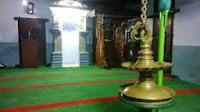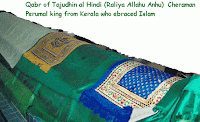The Brutality of Marthanda Varma: The Beginning
Malabar G Sankaran Nair tried to expose the brutal Marthanda Varma, Travancore King(1729-1758) in the Mithavadi annual number of 1928, by retelling the story of the murder of two brothers in 1730, the sons of his uncle, Ramavarma, the predecessor of him on the throne. It was an episode, the loyal historians of the royal family always tried to evade.
Sankaran Nair ventures into the story, thanking the famous Chithira Thirunal Library in Thiruvananthapuram, for providing him the required information, and he pegs the story on a woman from Ayodhya.
The Kunju Thampi brothers, Pappu Thampi and Raman Thampi were born to King Ramavarma II (who died 0n August 30, 1729), to a woman from Ayodhya, Abhirami, who had fled her country during a famine, with her brother Krishnan, and a maid. The king, who was staying at Eraniel Palace, saw her at the Suchindram Car festival in December and was struck by her beauty. Violating tradition, he publicly married her in Nagercoil. Her name was changed to Krishnathamma, and her brother became Krishnan Thampi.
Her two sons were known as Kunju Thampis-they and their sister Kochummini Thanka stayed in Eraniel with their mother, and the Kunju Thampis matured with all facilities, with proper education. Ramavarma died of smallpox, and on his deathbed, he called his nephew Marthandavarma and instructed him to look after Krishnathamma and her family well. Her family continued at Eraniel, while Marthandavarma shifted to Padmanabhapuram.
 |
| Marthanda Varma |
Once Marthandavarma went to Eraniel and was charmed by the beauty of his niece, Kochummini Thanka. He went back, called the Thampi brothers to his Nagercoil palace, and shared with them his wish to marry her. They agreed on the condition that the son in the relationship should be his successor. Marthandavarma became furious, sent out the brothers and began harassing them, and their family. He forcibly took away everything from their home, stopped the privileges provided to them, and asked them to leave the state.
They left Eraniel, took refuge in the home of a Kurukkal in Suchindram, went to Madurai, and complained to Alagappa Mudaliar, Dewan and Commander of Madurai Naicker. The bribed Mudaliar marched towards Travancore with his men. In the ensuing battle, the young Thampi, who drew his sword to kill Marthandavarma, was pacified by his brother and Mudaliar. A treaty was worked out by Mudaliar between the king and the Thampis who were asked to swear before the idol at the Neelakantaswamy temple, Padmanabhapuram. After the Thampis swore to be loyal to him, Marthandavarma too swore but played a trick by placing a house fly between his palms. He swore: "As long as THIS LIFE lasts, I will be on good terms with the Thampis."
He killed the fly immediately, making the pledge invalid.
 |
| Eraniel Palace, dilapidated, now |
After Mudaliar left for Madurai, Marthandavarma restored the privileges to the Thampis, and they once again started living at Eraniel. The king who was waiting for the right opportunity, one day called the brothers to Nagercoil palace. The younger brother, Raman got down near Kaniyakulam and went to Thazhakudi to see his properties there. When Pappu reached the palace alone, Marthandavarma, after receiving him, took the sword from him, praised its design, and began speaking about Mudaliar. Continuing the conversation, the king suddenly pretended to be furious, the soldiers came from everywhere as planned, and in the ensuing battle, the king chopped off Pappu Thampi's head with his sword. Hearing the news, Raman Thampi arrived, and the sword that he flung at him, accidentally hit on the ceiling, and Marthandavarma killed him at once. Krishnan Thampi, their uncle, after reaching the palace, stabbed himself in his belly and died; the mother and sister of the Thampis, died pulling out their tongue and bleeding. The scar on the ceiling was visible, till the palace was razed to the ground, years ago.
Fact and fiction
Historically, most of this is fiction, but the murder happened, for other reasons. In history, the brothers are, Thampi Raman Raman and Thampi Raman Adichan, commonly referred to as Kunju Thampis.
Marthandavarma was not the natural successor, when the reigning king, his uncle Ramavarma died in 1729. He was just 23, and only the third among successors-the other two, Ramavarma's brother, king of Eraniel and the Madathinkoor king at Karunagappally, were very much alive. Both of them mysteriously died within 8 months, after Marthandavarma ascended the throne. It was the beginning of the killing spree.
 |
| Padmanabhapuram Palace |
Born in 1706, Marthandvarma became the king of Neyyatinkara, when he was just 15. The elder Thampi Raman Raman was a samprathi or accountant, in the palace of Ramavarma, an expert in preparing documents. He had prepared the letter which Ramavarma sent to the Nanchinad Chieftain, Periyaveetu Mudaliyar, requesting him to fight back the army of Anantoji Naicker of Madurai, who entered Travancore without the knowledge of the king. Again, it was Thampi Raman, who prepared the draft of the agreement to be signed between the Travancore king and the English Chief at Anchuthengu (Anjengo), Dr Alexander Orme to build a Fort At Kulachal and to establish a mint, on April 25, 1723. In place of the king, it was the Neyyatinkara prince Marthandavarma, who signed the agreement with Alexander Orme, proving Marthandavarma was in charge very early. He had also signed in 1726 an agreement with the Madurai Naicker to send the mercenary Muslim force. But when he appointed a foreigner, Arumukham Pillai of Veerappanellur, Tirunelveli as the Dewan, his minister, the powerful Ilambayil Pandala and the chieftains, Ettuveettil Pillais, left the state. It is assumed that Marthandvarma got rid of the two successors of Ramavarma, with the help of Arumukham Pillai. Kunju Thampi brothers were against the camaraderie between Marthandavarma and the Dewan.
 |
| Suchindram Temple |
The story that the mother of the Thampi brothers was from Ayodhya is pure fiction-in history, their uncle is Kochukumara Pillai, belonging to the Vellala Pillai caste, from which the Travancore kings and princes used to take their women before Nair women became the concubines. Being patriarchal, the Thampis had the right of inheritance to wealth, but no right to succession. Since the elder brother is Kanakku Thampi Raman Raman in records, it is evident that he was an official and not a Kshatriya by caste. The prefix, Kanakku, is for a Pillai. Travancore State Manual of T K Velu Pillai asserts that the Thampi brothers fell out with Marthandavarma, for 'various reasons'. What would be the reasons?
 |
| Padmanabhapuram Palace/1943 |
There has been a protest when Arumukham Pillai was made the Dewan. It is possible that Thampi Raman Raman had a part to play in Marthandavarma calling the mercenary Muslim force from Madurai. After becoming king, Marthandavarma refused to pay Madurai Naicker the tribute agreed upon, and the force in turn made Arumukham Pillai a hostage at Kalakkadu Fort when Marthandavarma asked them to get the amount from the Dewan. Marthandavarma rescued the Dewan from there, making the Madurai Naicker furious, sending his commander Dewan Alagappa Mudaliar to Travancore in 1730, to get the amount by force. Thus, it was not to help the Thampi brothers he came, though the brothers were on his side.
The brothers were killed within a year after Marthandavarma took over, a period of great political turmoil. There is every chance Thampi Raman Raman lost his job and he complained to Mudaliar.
Another reason is the wealth-since Thampi's mother belonged to the Vellala Pillai caste that followed the patri lineal form of inheritance, her sons had rights in their fathers' property and the family was gifted property when Ramavarma was the king of Eraniel in 1706. Marthandavarma may have denied them the right of ownership, and Mudaliar would have interfered as Dewan of Madurai, which had suzerainty over Travancore.
The mystery of Ummini Thanka has been unravelled by Historian Marks De Lannoy, who hails from the family of Eustachius De Lannoy, in his book, The Kulasekhara Perumals of Travancore. He has unearthed a letter written by Marthanda Varma to Paliath Achan, Chief Minister of Cochin, on March 23, 1742, in which he says, the son of his elder brother, a Thampi, too rebelled against him (with the other two Thampis).
It means that Ummini Thanka (maybe whom Marthanda Varma loved)was married to Marthanda Varma's elder brother, and she had a son. Her hate of Marthandavarma was justified because, her husband, natural heir to the throne, was killed by Marthanda Varma to usurp the throne. Ummini Thanka and her son, Raman Thampi, were kept under house arrest by Marthanda Varma, after the attack on Eraniel Fort, on January 20,1730, by the Thampi brothers and the Pillais. They escaped and joined the brothers. The Fort was the property of the father of the Thampis, Rama Varma. Marthanda Varma defeated them, and the Thampi brothers complained to Mudaliar.
The first armed force in Kerala was formed by Marthandavarma at this point, under the leadership of the freed Arumukham Pillai, with Tamil Maravas. When it was defeated by Mudaliar, Marthandavarma held peace talks with Mudaliar's Commanders, Kanimia and Chokalingam Pillai. He swore to give money due to the Thampis, arrears to Madurai, and relinquish administration till he returns with money from Kollam. Mudaliar, who sent a protective force with him, waited a few weeks in vain for his return, then went back to Madurai, giving the responsibility of administration to the Thampi brothers.
Mudaliar and Thampi Raman Raman started extorting money from the rich. Though they demanded 10,000 panam from the Dutch Factory at Thengapattanam, the Commander refused to yield. Thampi Raman Raman, in 1730, tried to seize the wealth of the Padmanabha Swamy temple, to pay Mudaliar. Since the treasure was under the senior person in the family, the Attingal queen was in charge, and her minister, Vanchimuttam Pillai had entrusted the treasury to the city chieftains. They resisted Thampi Raman Raman, who went back frustrated, to Kalkulam. The Thampis continued to administer Travancore, on Mudaliyar's behalf. Marthandavarma returned from Kollam with local chieftains and soldiers of the defeated army, and laid siege to the Kalkulam Fort, making Thampis flee for life.
When Mudaliyar came for help, Marthandavarma bribed him, and a treaty was worked out, with the Dharmapuram chieftain, as mediator. After Mudaliar went back, with definite clauses to pay Madurai Naicker and the Thampis in agreement, Marthandavarma refused to comply, and he invited the Thamps to meet him at the Nagercoil palace, after asking his henchmen to quarrel with him, at the arrival of the brothers.
On October 28, 1730, Thampi Raman Raman arrived and ignorant of the enemy's plan, confronted the henchmen, and they killed him. The younger Adichan Thampi, who came in, shocked by screams, was killed with a dagger by Marthandavarma. The news was spread that the brothers died in an encounter. A total of 82 people, who were loyal to the brothers were hanged at the Mekkamandapam, and the women in the families were sold to fishermen.
Marthandavarma was only 24, with ample time to swim in an ocean of blood, which he did.
_____________________
Reference:
1. Marthandavarma Muthal Munro Vare/K Sivasankaran Nair
2. Raja Kesavadas/V R Parameswaran Pillai
3. Sree Vanchi Rajya Charithram/M Rajaraja Varma
4.Travancore Dynastic Records
5. Mathilakam scrolls
6. A Collection of Treaties, Engagements and Other Papers of Importance
7. Thiruvithamkur Charithram/Pachu Moothath
8. Travancore State Manual/T K Velu Pillai
9. Kulasekhara Perumals of Travancore/Marks De Lannoy
9. Kulasekhara Perumals of Travancore/Marks De Lannoy
See my Post,A BRAIN CHAOS:THE DEATH OF SWATI THIRUNAL






























